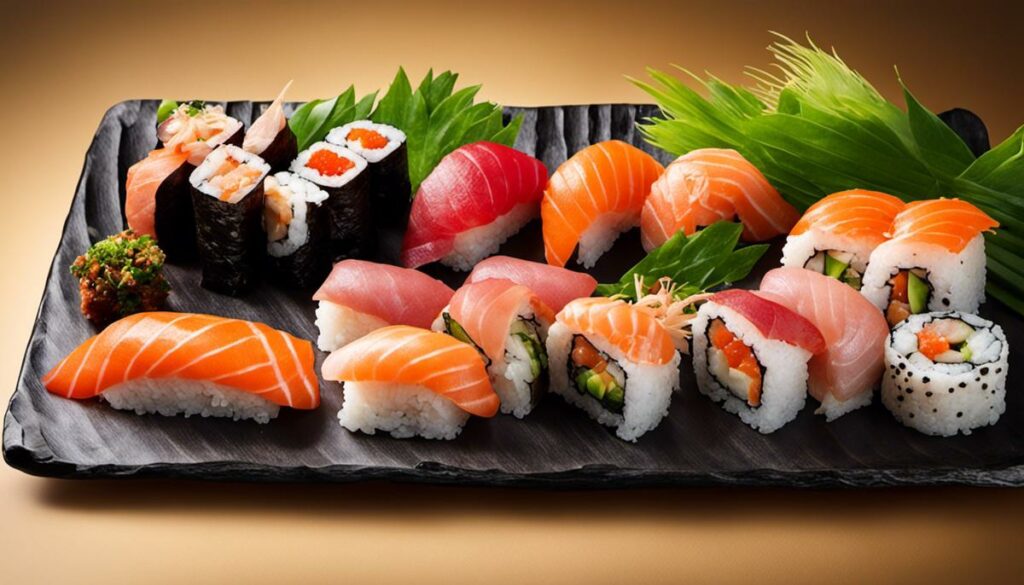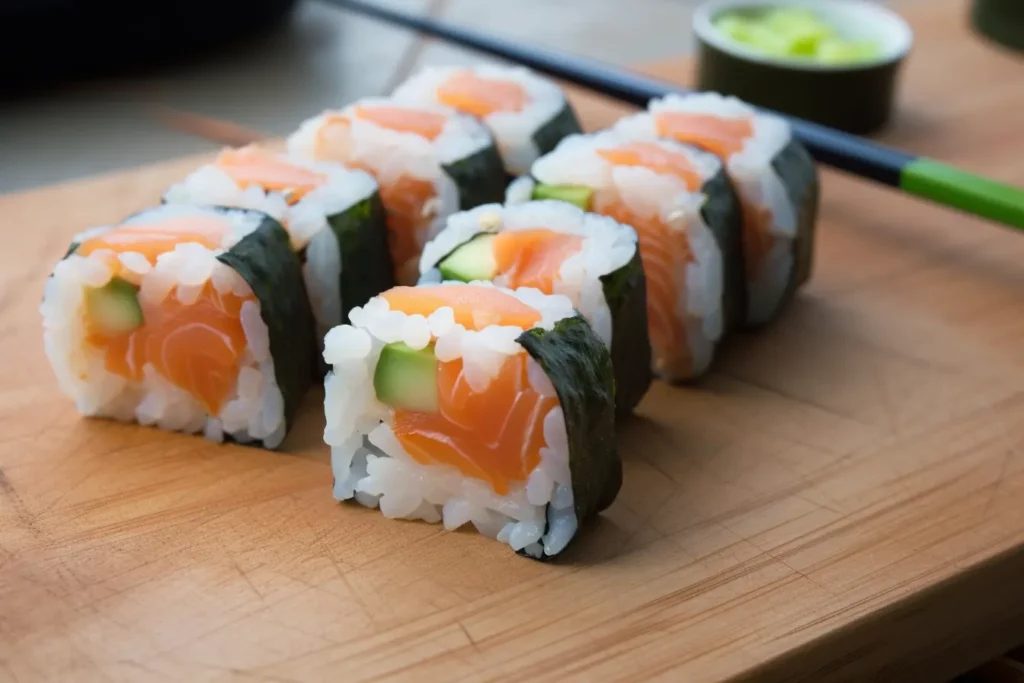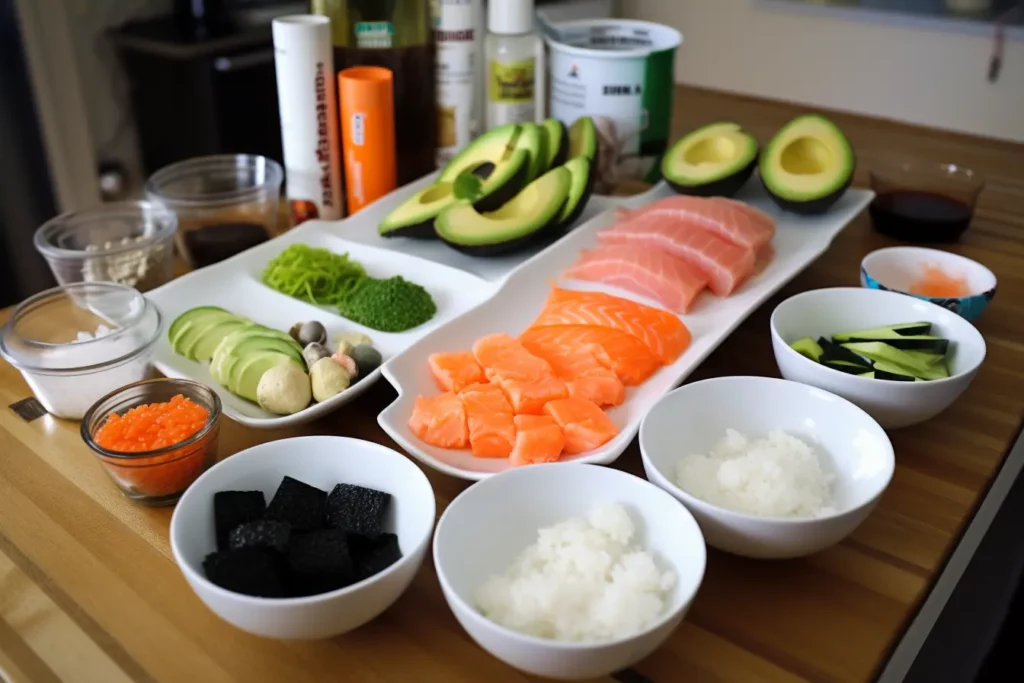The passion for sushi is spread worldwide and has its origins in a rich and complex history that dates back to ancient times. The gastronomic tradition, which states that art and aesthetics play as big a role as taste and aroma, is an essential feature of sushi culture. Sushi, an elegant and multi-layered food, is deeply rooted in Japanese culture and has undergone significant developments over the centuries that have made it what it is today: a symbol of sophistication and gourmet art. This essay takes a look at the world of sushi and the importance of wasabi in this culinary art. In the course of the spread of sushi culture, we think about the developments and trends that are shaping the industry.
The History of Sushi
Sushi – just the thought of this little delicacy makes the gourmet’s mouth water. But what exactly is the appeal of sushi and how has this culinary tradition evolved over time? Immerse yourself with us in the world of sushi, where tradition and aesthetics go hand in hand.
The tradition of sushi has its roots, not surprisingly, in Japan. But few people may know that sushi was not originally used as a luxury meal, but rather as a method of preservation. As early as the 4th century, people in Southeast Asia used fermented rice to preserve fish. Once this preservation process was completed, the rice was discarded and only the fish was consumed.
It wasn’t until the 8th century, during the Nara period in Japan, that people began to eat fermented rice in addition to fish. It was the beginning of what we now know as sushi. In the Edo period, people began to use fresh fish on the rice, which led to the development of the widely known Edo style, which retains its popularity to this day.
As for the box shape that we love so much about sushi, this particular aesthetic was brought to Japanese cuisine by sushi master Hanaya Yohei in the 19th century. In contrast to the traditional methods, his creations had the special advantage that they could be consumed immediately. A revolution in the world of sushi!
With Japan’s expansion into the rest of the world in the 20th century, the worldwide spread of sushi also began. Although these were initially only restaurants in major cities and centers of the Japanese diaspora, in the 1960s and 1970s, sushi became popular in the United States. From then on, his popularity spread all over the world.
And what about today? Sushi is loved by gourmets all over the world and represents a lifestyle of elegance and exquisite taste. It’s more than just a dish, it’s an art form, a feast for the eyes as well as the palate. Whether in urban sushi bars, luxury restaurants or even supermarkets, the tradition of sushi has found its place in the global gourmet scene and continues to thrive.
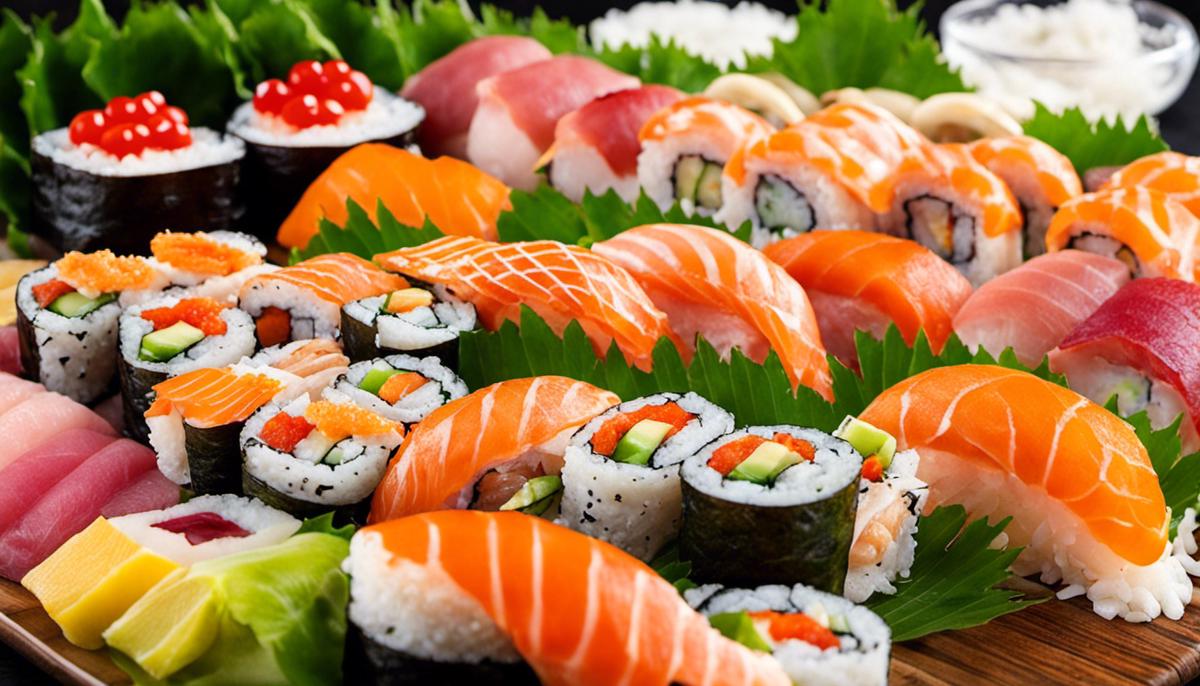
The Art of Sushi Making
In the realm of flavors and nuances, the key elements and techniques used in the production of sushi are definitely of great importance. Going deeper into the art, undeniably it is a process that requires skill, patience and, above all, a deep understanding and respect for the ingredients.
The first thing to consider is the heart of the sushi, the Shari or sushi rice. Shari, the sticky rice prepared with rice vinegar, sugar and salt, sets the foundation for the entire sushi experience. Cooking the rice requires a precise balance between moisture and heat, and one wrong step could mean the difference between ultra-gentle rice and mushy porridge.
Then we have the fish. High-quality sushi is made with absolute respect for the creature. The fish has to be fresh, but that’s just the beginning. The ability to fillet, cut and handle the fish properly is just as important for the final product. In fact, with certain styles of sushi like nigiri, the type of cut is crucial to the final look, taste, and texture.
The art of “Mizuhiki”, the selection and use of nori, is another important factor. “Nori” of high quality, pressed dried seaweed, should have an even dark color, a crisp bite and a distinct sea taste.
But sushi is more than a basic side dish and raw fish on rice. Sushi is art, it’s an expression, it touches all the senses, and none of these aspects are important without the right balance and the use of wasabi, gari (pickled ginger) and shoyu (soy sauce).
There are certainly many more elements and techniques that go into making sushi, but even these few make it clear how much attention to detail, art, and mastery goes into every piece of sushi. When you open your eyes, nose and taste buds, every bite is a sensory experience and a journey into the depths of Japanese culture. In the end, sushi is more than just a meal. It’s a lifestyle, an art form, and a truly masterful craft that celebrates the extraordinary wonders of nature.
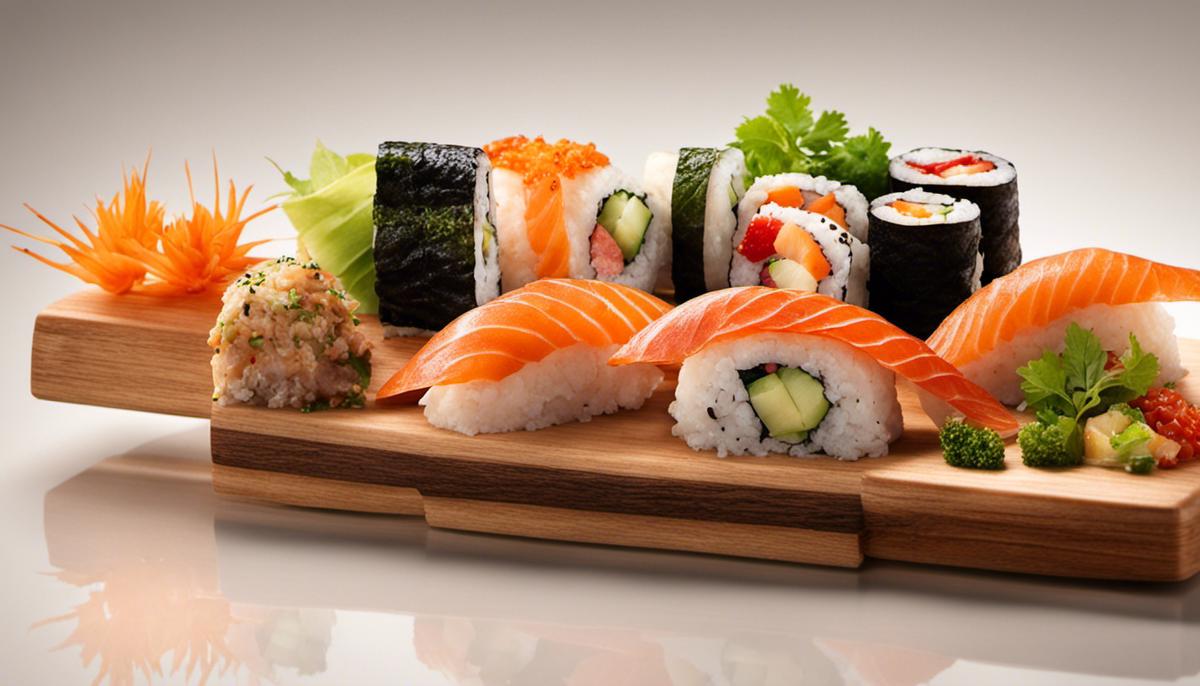
The role of wasabi in sushi
Welcome to another insightful piece where we explore the world of coastal gastronomy and the beauty of Japanese cuisine. Wasabi and sushi are the main protagonists in this cultural dance of delicacies. So, let’s dive into the green depths of wasabi and discover the secret behind its significant role in sushi.
But, what exactly is wasabi? Wasabi is a plant native to Japan known for its intense flavor and spectacular green color. It is often confused with horseradish, but believe us, the taste is incomparable. More piquant and complex than its European cousin, wasabi is an understatement.
And why is it so important for sushi? Wasabi is the tactile black to sushi’s bright white – it elevates the flavor, complements the freshness of the fish and neutralizes any fishy smells at the same time. The fiery green brings out the creamy coolness of the raw fisherman’s yield, elevating every bite of sushi to a spicy, exotic flavor level.
However, wasabi doesn’t just offer a flavor enrichment. Interestingly, it is also a natural antiseptic that helps fight any bacteria that might be in the raw fish. So it’s not only a culinary experience, but also a smart way to protect our health. Clever, isn’t it?
Plus, the use of wasabi speaks to the attention to detail and craftsmanship that goes into making sushi. Every component, including choosing the perfect wasabi, reflects the timelessness of culture and celebration of nature that are at the heart of Japanese culinary tradition.
Wasabi also plays an essential role in creating the harmonious balance in the taste world of sushi. Together with gari (pickled ginger) and shoyu (soy sauce), wasabi forms an intriguing trio that helps create a full-bodied and fulfilling taste experience.
The next time you indulge in a delicious platter of sushi, imagine the bright green wasabi paste dancing through the rows of exquisitely layered fish and rice, complementing each element and optimally balancing the artistic expression of taste and aesthetics. This is sushi – artful, sought-after and a constant source of enjoyment. Enjoy the journey and make every bite count!
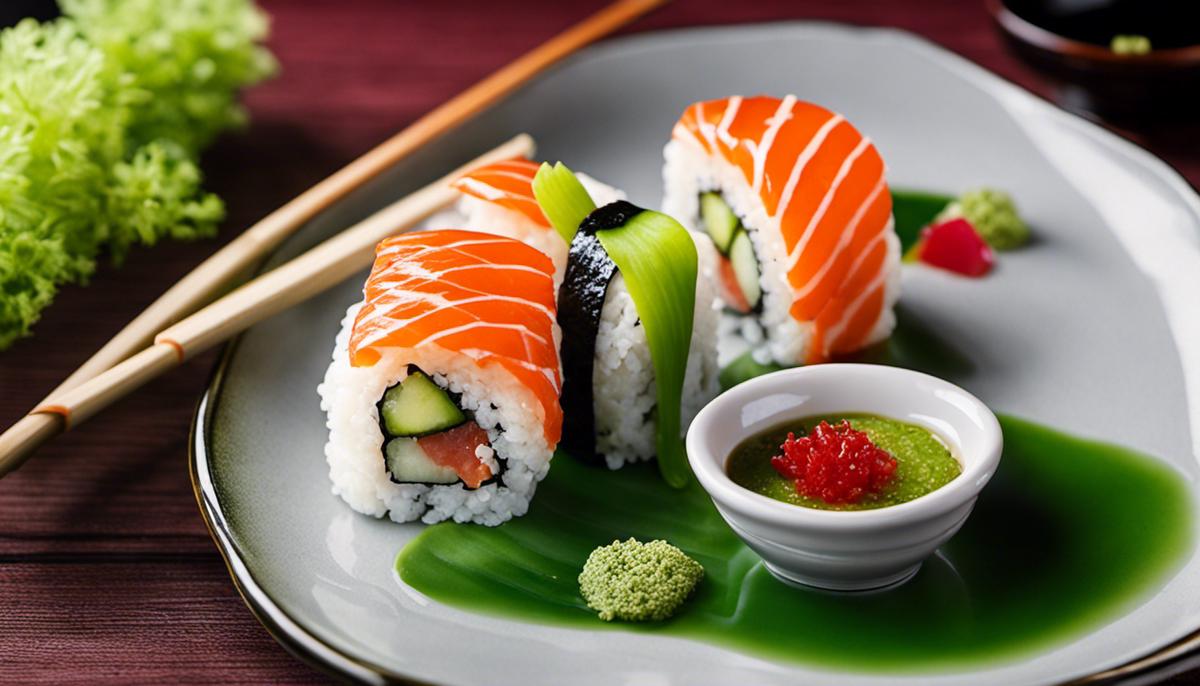
Sushi and trends
As a global phenomenon, sushi has taken a huge step from its humble role as a method of preserving fish to become a symbol of refined food and refined aesthetics. But the success of the sushi trend has also meant that the traditional dining experience has been transformed – both in terms of taste and presentation.
Perhaps one of the most visible signs of the global sushi trend is the expansion of sushi menus beyond traditional ingredients and ways of preparation. While sushi traditionally consists of a small selection of fish varieties and a handful of rice forms, the global sushi trend has led to the development of a rich variety of new ingredients and cooking styles. From the eye-catching “sushi burritos” popular in Western countries to creative fusions with ingredients like avocado, mango, and even peanut butter, global culinary influences are changing the way sushi looks and tastes.
At the same time, the global sushi trend has led to a strong emphasis on the value of presentation. In traditional Japanese food culture, the aesthetics of the dish are almost as important as the taste. With the influence of modern Western food culture, where presentation isn’t always such a priority, we might have expected this aspect of sushi eating to be watered down. Instead, the global trend has brought the aesthetics of sushi eating to the forefront.
Also, the global trend has helped democratize the sushi experience. Where sushi was once only available in expensive specialty restaurants, it can now be found in supermarkets, fast-food chains, and even some school canteens. This availability has allowed more people to taste sushi and appreciate its subtleties – hopefully it will also encourage some to learn more about the rich history and culture behind this unique food.
So, sushi as we know it worldwide today is definitely no longer the sushi that Hanaya Yohei created back in the 19th century. But while the global sushi trend has definitely changed the way we experience this food, it’s still fascinating to see how many of the original principles – respect for the ingredients, mastery of craftsmanship, the harmony of taste and aesthetics – still play a central role in sushi culture.
In fact, one could argue, it is precisely this permanence in the midst of change that makes sushi such a fascinating and enduring element of our global food culture. Like a delicious bite gliding down the tongue, sushi leaves a trail of flavors, colors, and stories – a constant connection to an ancient tradition that continues to reverberate in our hearts and stomachs. The global sushi trend may have changed sushi, but it has also kept it alive in a wonderful way.
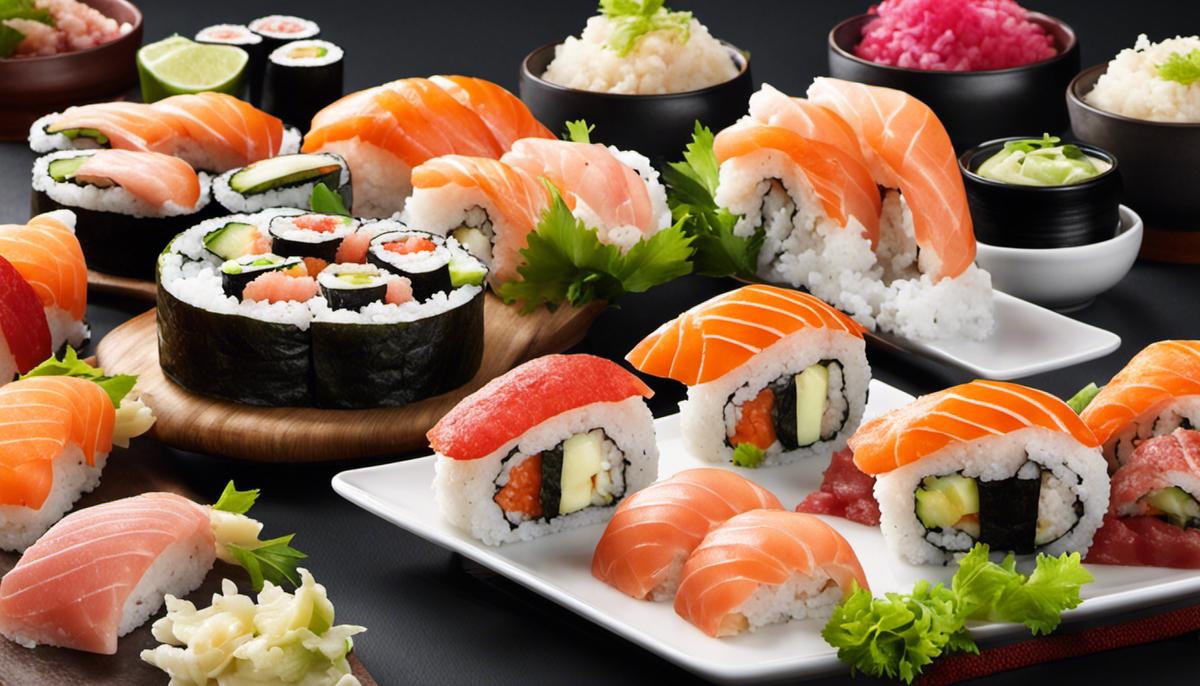
After a detailed discussion of the history, the art of making sushi and the role of wasabi in this context, it has become clear that sushi is more than just a dish. It is a culinary marvel whose popularity is due to its unique taste, subtle aesthetics, and cultural significance. The global trend has certainly influenced sushi culture, but in its essence, sushi remains authentic and preserves its traditional values. It has allowed the creation of various forms such as fusion sushi and vegetarian varieties and takes into account the sustainability of fishing practices. Sushi is not only a delight for the palate, but also a reflection of Japanese food culture and a testament to the dynamism and adaptability of gastronomy in the face of global influences.
